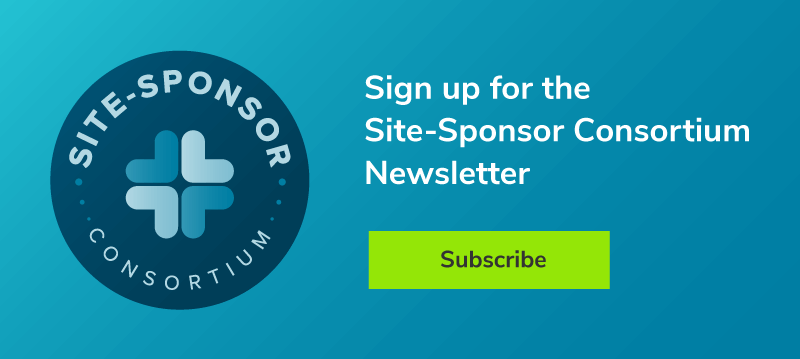Q&A Part 1 – Gene Therapy Research in the Age of COVID-19
In Advarra’s inaugural virtual symposium, experts from industry and academia met to discuss the unique challenges gene therapy research poses for research sites, sponsors, CROs, and study participants. Panelists talked about how gene therapy research can address infectious diseases like coronavirus, the impact of manufacturing challenges on study startup, and ways the research community might overcome obstacles to optimize startup and the overall research process.
Following the presentation, panelists participated in a Q&A session to address questions submitted by the audience. Due to time constraints we weren’t able to answer all questions, so our experts have provided responses to some of the most popular topics in this 2-part blog.
Q: What is the greatest challenge in preparing for institutional biosafety committee (IBC) review?
A: Not surprisingly, one of the biggest challenges is the impact IBC reviews can have on study activation timelines. At academic institutions, IBCs typically meet once a month, and submission requirements and deadlines varying greatly from site to site. On the other hand, externally administered IBCs (like Advarra) may have the ability to meet ad hoc within a few days of receiving a submission. It’s important to educate study teams and plan ahead. A site without an existing IBC must register its IBC with the National Institutes of Health (NIH) Office of Science Policy, which typically takes 4-6 weeks prior to the anticipated start date. When the NIH approves the IBC registration, that authorizes the IBC to convene a meeting and issue approvals. To avoid delays, sites should register with NIH prior to submitting the study for IBC review.
Preparing the IBC submission can also be difficult—some submission forms (particularly from some local IBCs) can be very technical and challenging for research teams who haven’t worked with recombinant nucleic acids. The application also needs to cover how the study team and others will be trained to handle the gene therapy product and ensure containment. It may be helpful for sponsors/CROs to maintain a list of FAQs from IBCs that they can provide to sites or reference during startup.
Q: How is IBC review for gene therapy studies different from institutional review board (IRB) review, and what are the differences in how they handle review of informed consent forms (ICFs)?
A: The institutional review board (IRB) and IBC both focus on risks. While the IRB focuses on assessing the risks to human research participants, the IBC focuses on the risks posed by genetically engineered materials to the research participant as well as the research staff, the community, and the environment around the research site.
The IBC looks at the ICF to ensure the risks associated with the genetically modified investigational product are adequately relayed. The Food and Drug Administration (FDA) requires long-term follow-up for investigational products that contain integrating vectors, so if the ICF doesn’t mention this, the IBC may require an ICF revision (or may request that the IRB require those changes). These materials may be infectious in nature, so the IBC must review occupational risk procedures and spill procedures as well as waste disposal procedures, since these are important for occupational risk management and protection.
The IBC also ensures the research personnel have adequate training to work safely with the investigational product and may require training for research participants if there are concerns about transmission of infectious agents.
Q: How do we assess the urgency/necessity of gene therapy research in rare diseases in the midst of a pandemic?
A: Ultimately participant safety is the most important thing here—we are evaluating every study (gene therapy and otherwise) due to the pandemic. Incurable diseases don’t stop during a pandemic, and healthcare for those individuals can’t stop either. You have to consider what disease is being investigated. Each protocol needs to be analyzed to evaluate whether it contributes to the potential health and well-being of participants.
In protocols that do potentially support health/well-being in patient populations with little to no other treatment options, the key to is limit potential exposure of the patients to COVID-19. This is done by assessing what procedures can be done remotely or skipped without sacrificing participant safety. For example, cystic fibrosis patients have an underlying respiratory disease that puts them at a higher risk for severe illness from COVID-19, and infection control is a big concern for these patients to begin with. Also consider whether the protocol includes procedures that could increase risk, such as spirometry or any sort of forced exhalation that puts anyone in the area at risk. If key assessments must be done in the clinic (i.e., can’t be done via home health or remotely), that may impact the ability to meet the trial’s objectives.
Q: Are there risks involved for participants receiving multiple gene therapy treatments? This might be a repeat of the same treatment or multiple different gene therapies—after receiving their first treatment, would they be excluded from future treatments?
A: It comes down to what type of gene therapy we are talking about, the mechanism of how it is delivered and how the body responds to it. For example, with an adeno-associated virus (AAV) vectored DNA therapy, participants may develop antibodies to the vector itself and therefore not be able to receive another dose. Whereas with an mRNA or protein replacement therapy, participants would probably be able to receive multiple doses because there isn’t a likelihood that they would develop an immune response. Researchers must make sure participants are well informed about the future impact on gene therapies, whether it be the same therapy or a different one.
Because it’s known that certain gene therapies can cause immune responses against the gene therapy vector, some studies may utilize different viruses for different doses, or they may manufacture viruses (e.g., AAV) that are different serotypes. However, that is very labor intensive for research and development and for manufacturing, adding significant complexity to those types of studies. Many studies exclude participants who have had prior involvement with particular gene therapies.
Ready for more information on the current state of gene therapy research? Read Part 2 of the virtual symposium Q&A.


